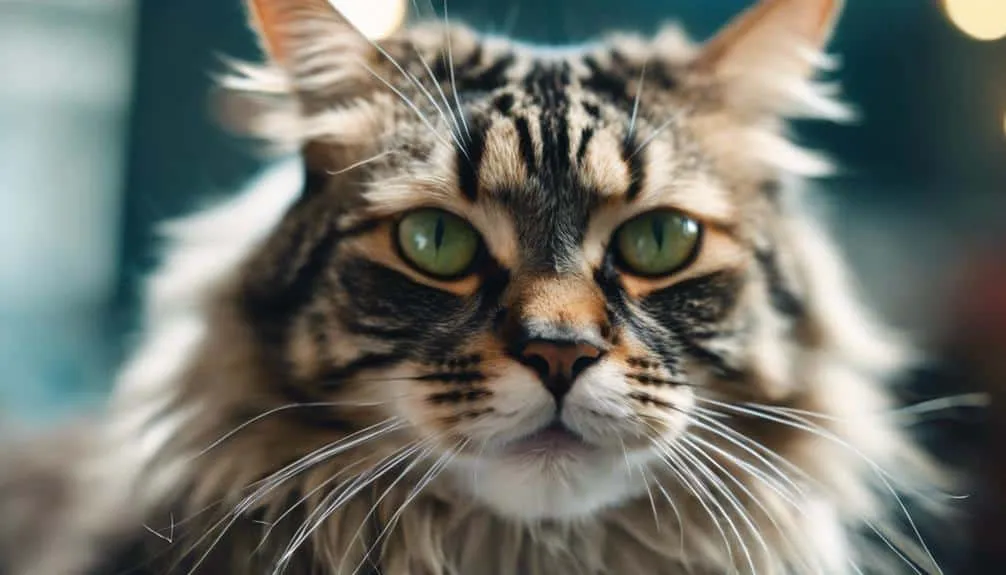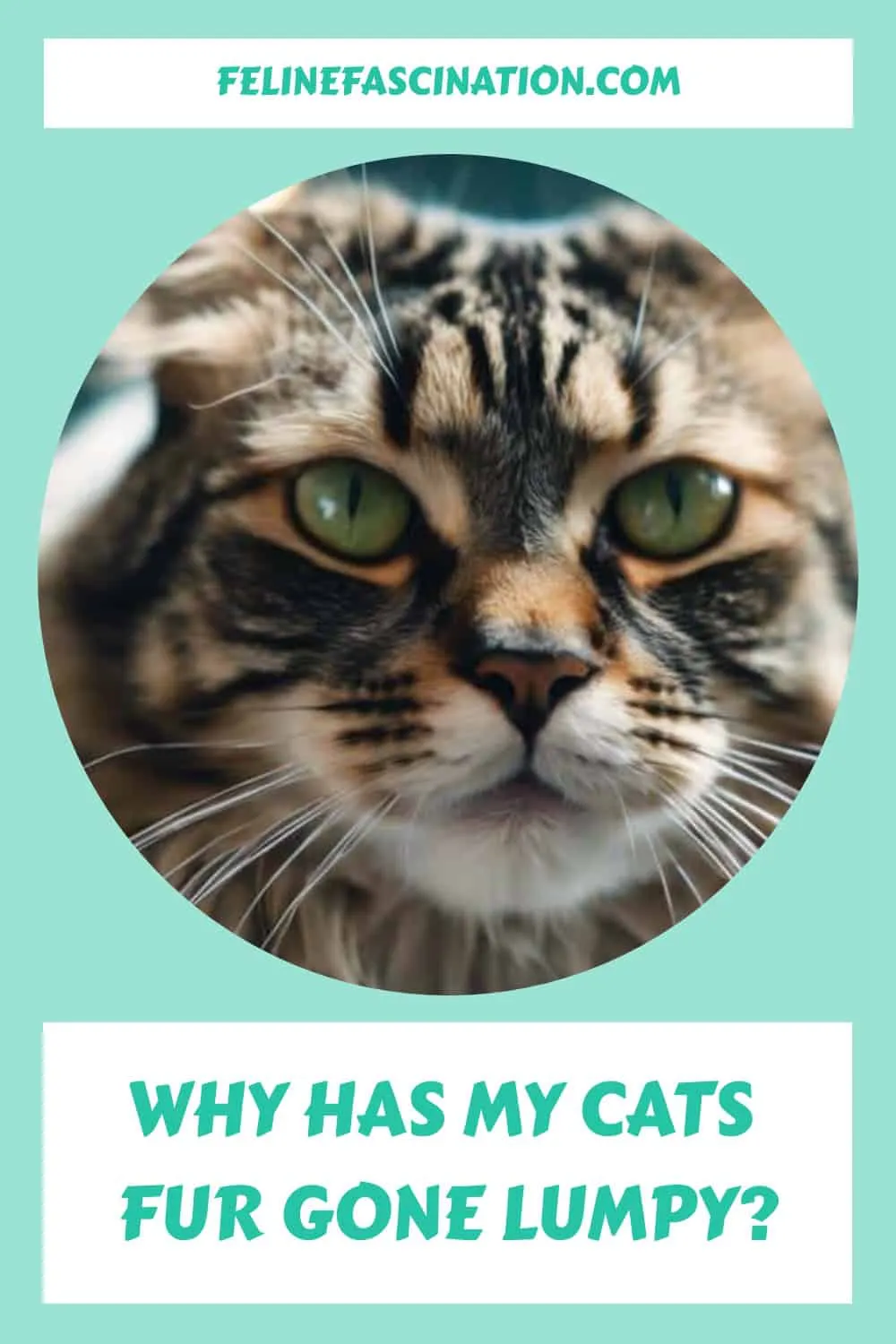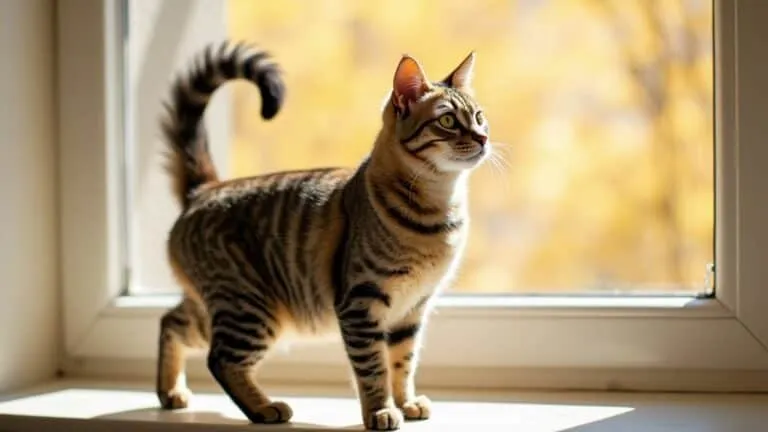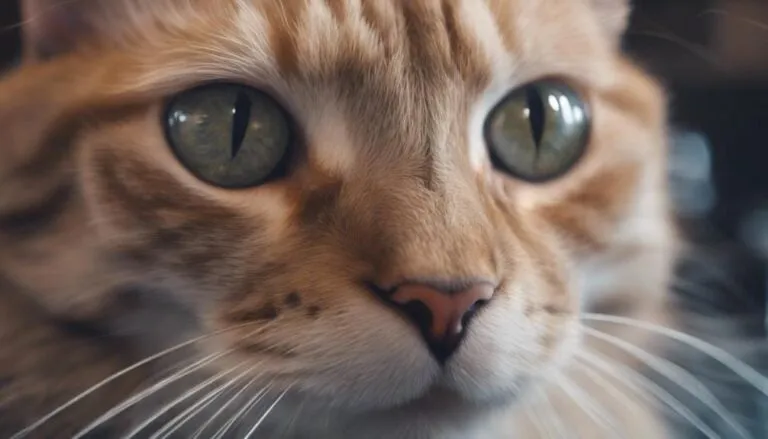The Best Fluffy Pancakes recipe you will fall in love with. Full of tips and tricks to help you make the best pancakes.

If your cat's fur has developed a lumpy texture, it's important to pay attention to potential health concerns that might be causing this issue. Understanding the underlying reasons behind your cat's altered fur condition is vital for their well-being. By exploring the possible factors contributing to this change, you can take informed steps to address the root cause and restore your feline friend's coat to its usual smooth state. Discovering why your cat's fur has gone lumpy could lead you towards effective solutions that cater to their specific needs and promote their overall health and happiness.
Key Takeaways
- Cat's fur may be lumpy due to underlying health issues like allergies or infections.
- Nutritional deficiencies can affect fur health; ensure high-quality protein intake.
- Parasitic infestations like fleas and ticks can lead to lumpy fur; regular treatments are crucial.
- Incorrect grooming techniques may cause lumpy fur; use appropriate tools and grooming practices.
- Stress and anxiety can contribute to lumpy fur; provide a calming environment and observe behavioral cues.
Underlying Health Issues
If your cat's fur has gone lumpy, it could be a sign of underlying health issues that require prompt veterinary attention. Skin conditions can manifest in various ways, affecting not only the appearance but also the overall well-being of your feline companion. When lumps or bumps appear in your cat's fur, it's essential to seek medical treatment promptly to address any potential health concerns.
Skin conditions in cats can be caused by a range of factors, including allergies, parasites, infections, or even more severe issues like tumors. These conditions can lead to discomfort, itchiness, and pain for your pet. Hence, a thorough examination by a veterinarian is vital to determine the root cause of the lumpy fur and establish an appropriate treatment plan.
Medical treatment may involve diagnostic tests, such as skin scrapings or biopsies, to identify the specific skin condition affecting your cat. Based on the diagnosis, your veterinarian will recommend the most suitable course of action to alleviate your cat's discomfort and restore their coat to its natural state. Remember, early intervention is key in addressing skin conditions in cats effectively.
Nutritional Deficiencies
When your cat's fur appears lumpy, investigating potential nutritional deficiencies becomes important to guarantee your feline companion's overall health and well-being. Adequate protein intake is essential for maintaining a healthy coat. Cats require high levels of protein in their diet to support the growth of strong and glossy fur. Make sure that your cat's food contains sufficient protein from quality sources such as meat, fish, or poultry.
In cases where your cat may not be getting enough nutrients from its regular diet, dietary supplements can be beneficial. Consult with your veterinarian to determine the appropriate supplements for your cat's specific needs. These supplements can help address any deficiencies that may be affecting the condition of your cat's fur.
Parasitic Infestations
To address parasitic infestations in your cat, regular preventative measures such as flea and tick treatments are essential for maintaining your feline companion's health and well-being. Fleas and ticks are common external parasites that can cause discomfort and even lead to skin issues in cats. Ensuring your cat is on a proper flea control regimen can greatly reduce the risk of infestations.
Mite infestations, such as ear mites or mange mites, can also affect your cat's fur and skin, leading to irritation and hair loss. Regular check-ups with your veterinarian can help detect these issues early on. Your vet may recommend specific treatments tailored to the type of mite infestation present.
Incorrect Grooming Techniques
Improper grooming techniques can inadvertently lead to lumpy fur in your cat, causing discomfort and potential skin issues. When it comes to brushing methods, make sure you're using the right type of brush for your cat's fur length and type. Long-haired cats may require daily grooming to prevent matting, while short-haired cats can benefit from a weekly brushing session. Avoid brushing too harshly or using the wrong tools, as this can damage the fur and lead to uneven clumps.
Regarding bathing frequency, cats are generally good at self-grooming and may not need frequent baths. Over-bathing can strip their skin of natural oils, leading to dryness and irritation. However, if your cat gets into something sticky or dirty, a gentle bath with cat-friendly shampoo is recommended. Always make sure the water temperature is comfortable for your cat and dry them thoroughly after the bath to prevent damp fur from clumping.
Stress and Anxiety Factors
Incorrect grooming techniques can inadvertently contribute to your cat's stress and anxiety levels, potentially exacerbating lumpy fur issues. Cats are sensitive creatures, and changes in their environment or routines can cause them significant distress. To help your feline friend cope with stress and anxiety, consider implementing behavioral therapy techniques. Behavioral therapy involves understanding your cat's behaviors and modifying them through positive reinforcement or redirection.
Additionally, relaxation techniques such as creating a peaceful and safe space for your cat, providing soothing music, or using pheromone diffusers can help alleviate stress.
Observing your cat's body language and behavior cues can also provide valuable insights into their emotional state. If you notice signs of anxiety or stress, such as excessive grooming or hiding, addressing these issues promptly is essential. By incorporating behavioral therapy and relaxation techniques into your cat's daily routine, you can create a calming environment that promotes their well-being and may help reduce lumpy fur problems caused by stress.
Environmental Allergies
Environmental allergies can greatly impact your cat's fur health, leading to various skin and coat issues. Your feline friend may be sensitive to indoor pollutants like dust, mold, or pollen, which can trigger allergic reactions affecting their skin and fur. These allergies can manifest as excessive itching, redness, hair loss, or the formation of lumps in the fur.
Seasonal changes can also exacerbate these allergies, with pollen levels fluctuating and indoor air quality potentially being affected by factors like central heating or air conditioning. If you notice your cat's fur becoming lumpy or their skin showing signs of irritation, it's essential to consult with your veterinarian to determine the underlying cause. Your vet can help identify specific allergens that may be causing the issue and recommend appropriate treatment options to alleviate your cat's discomfort and restore their fur health.
Frequently Asked Questions
Can Lumpy Fur in Cats Be a Sign of an Allergic Reaction?
If your cat's fur appears lumpy, it could signal an allergic reaction. Consider grooming techniques, allergy testing, dietary changes, or skin supplements. Seek veterinary advice promptly to guarantee your feline friend's well-being.
How Can I Prevent My Cat's Fur From Becoming Lumpy?
To keep your cat's fur smooth and healthy, try grooming techniques like regular brushing to prevent matting. Guarantee a balanced diet, plenty of water, and shedding control to help maintain their coat.
Are There Any Home Remedies to Treat Lumpy Fur in Cats?
To treat lumpy fur in cats at home, try gentle grooming techniques, such as brushing regularly. Consider natural remedies like coconut oil. Maintain a balanced diet and schedule regular vet check-ups for your feline friend's overall health and well-being.
Is It Possible for Stress to Cause Lumpy Fur in Cats?
Hey there, stress can indeed lead to lumpy fur in cats. By focusing on grooming techniques and anxiety management, along with dietary changes to address skin conditions, you can help your feline friend feel better.
Can Environmental Changes Lead to Lumpy Fur in Cats?
When environmental changes occur, such as diet alterations or disruptions in your grooming routine, your cat's fur can become lumpy. Seasonal shedding or shifts in the indoor environment may also contribute to this. Observing these factors can help maintain your cat's coat health.
Conclusion
Now that you understand the possible reasons behind your cat's lumpy fur, it's time to take action.
Just like a gardener carefully tends to their plants, nurture your cat's health and well-being.
By addressing underlying health issues, providing proper nutrition, grooming with care, and creating a stress-free environment, you can help your furry friend blossom into a beautiful, healthy companion once again.
Your cat's coat will soon be as smooth as a gentle breeze on a sunny day.










